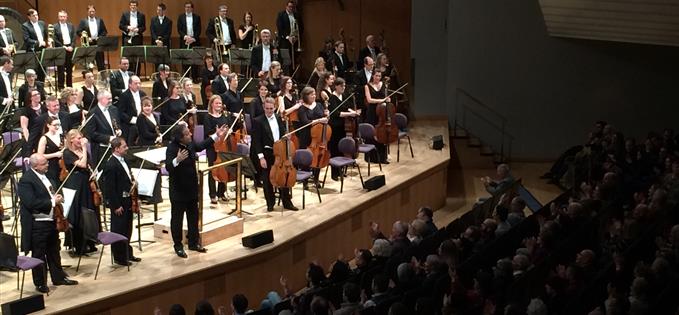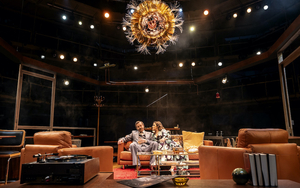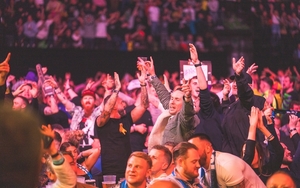HAS any twentieth-century symphony had more written about it than the Leningrad, Shostakovich’s seventh? It has been in and out of favour as much as the composer was in his homeland and has variously been a patriotic monument, a cry against Fascism, an ironic blast against Soviet Communism and a paean to the hundreds of thousands who perished in the siege of Leningrad – ‘a deeply tragic episode, a mass requiem’ as the composer once said, a reminder that Stalin did as much damage to the city as Hitler. Whatever the narrative a listener would like to impose, it is an immense piece of music, the first movement alone being longer than many symphonies.
The conductor Juanjo Mena obviously had a very well-drilled orchestra in front of him
And the BBC Phil played the first movement thrillingly. After the rather peaceful start a lone snare drum appears, a continuous rat-a-tat-tat. A friend had the score with him – the snare part was a straight line across page after page, the notes the same page after page, apart from the instruction for the drum to become louder and louder. The central part of the movement is seen as a ‘march’, whereby – to my mind – a rather mocking six note motif is an insistent, increasingly hysterical ostinato; the orchestra mounting forays after each section where flute, then clarinet, oboe, double bassoon, horns and trumpets take up the theme, repeated twelve times in all. The climax of this propulsive martial section was an eruption of brass – I counted 22 instruments – and eight percussionists in full flow, including a second snare, which drove everything into a delirium and pinned the audience to the seats. It fell away, and then the snare and the theme reappeared, quieter, hesitant, with a diminishing defeated trumpet.
 BBC Philharmonic
BBC PhilharmonicThe conductor Juanjo Mena obviously had a very well-drilled orchestra in front of him. The precision was evident throughout the rest of the symphony, as they were as arresting in the pianissimo, the more delicate moments, as the Sturm und Drang. The second movement, at one point called ‘Memories’, is quite light and playful, with an outstandingly-played oboe solo. In fact, the solos overall were remarkable, especially from the bass clarinettist and the flutes, and the timpanist Paul Turner was sensational. The control of the strings was impeccable throughout; at one point the entire section plucked a single note as one, at another the slap pizzicato (a phrase I’ve just learnt) from the cellos and double basses electrified.
The fourth movement, where the mockery disappeared and the first movement's motif was recapitulated, rose and fell, then re-ignited in an urgent and moving crescendo, underpinned by the returning snare and blaring bass trombones. It was immensely moving. For the last fifteen minutes I didn't make a note.
The first half of the concert was a fine rendition of Bartok’s Third Piano Concerto. Niftily played by the nattily-dressed Dejan Lazić, he had a wonderful lightness of touch; especially in the bucolic, halting second movement, the Adagio religioso. Lazić moved with the music, picking out phrases with a lovely clarity and in the quieter passages he leant into the keys to listen to them more attentively .When finishing passages, he almost seemed to start conducting. Both his ovation and that at the end of the Shostakovich were long and loud. This is why people go to live concerts. But you can hear it on Radio 3 at 7.30pm on Wednesday 17, and then for a month on catch-up - It is unreservedly recommended.
 Dejan Lazić
Dejan Lazić













